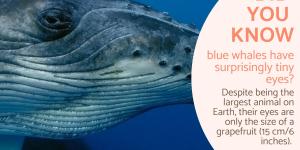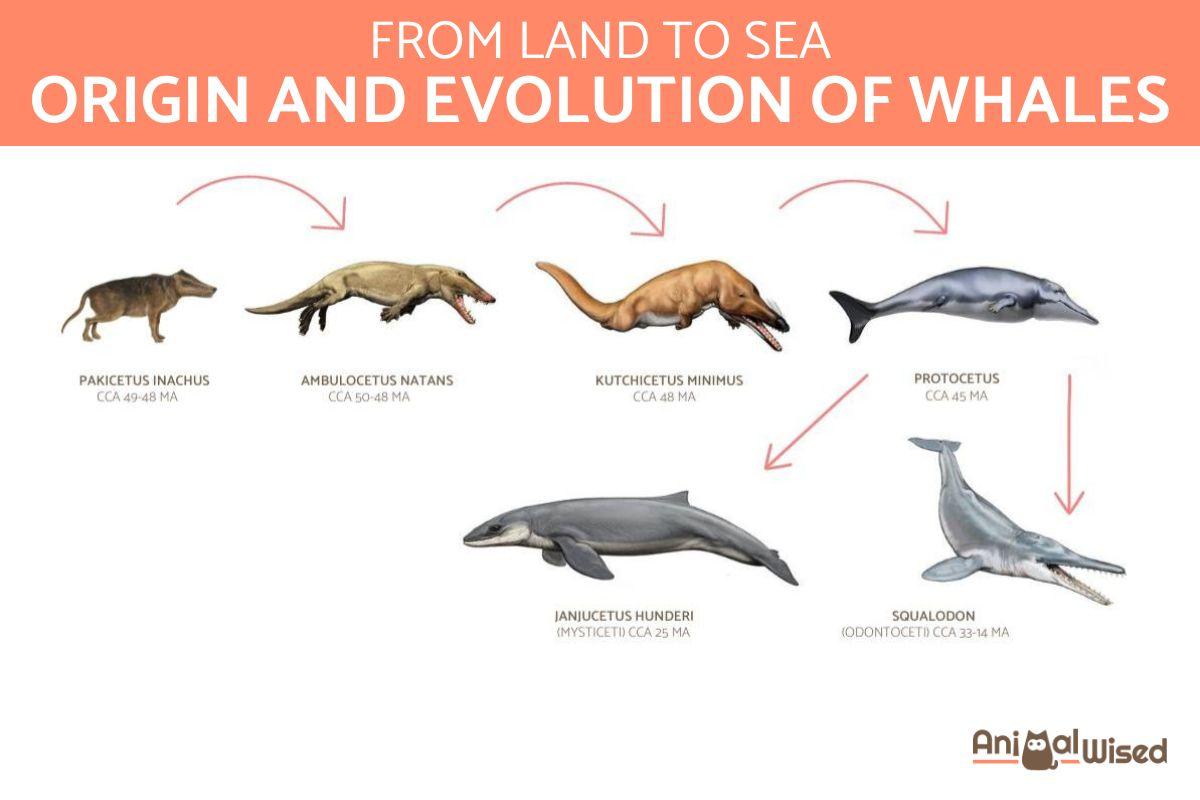How Did Whales Go From Land to Sea?


Despite their majestic presence in the ocean depths, whales share a surprising secret, they're warm-blooded mammals, just like us. They breathe air, give birth to live young, and nurture them with milk. This lineage takes an even more fascinating turn when we discover their ancestry. Millions of years ago, whales weren't ocean giants, but land dwellers. In fact, their closest living relative is the hippopotamus, hinting at their remarkable transformation over time.
This AnimalWised article explores the incredible evolutionary journey of whales and how they transitioned from land to the ocean giants we know today.
Why do people think whales are fish?
For centuries, whales were mistakenly classified as fish, mainly because of their aquatic habitat, streamlined bodies, and use of fins for movement.
A turning point came in the 18th century with the work of Carl Linnaeus, a pioneer in taxonomy (classification of living things). Through careful observation, Linnaeus recognized key similarities between whales and land mammals. These included warm blood, air-breathing lungs, live birth, and nursing with milk. Based on these shared traits, Linnaeus placed whales firmly in the class Mammalia.
Later, Charles Darwin's theory of evolution further solidified the understanding of whales as mammals. While not his primary focus, Darwin acknowledged the challenge whales posed due to their extreme aquatic adaptation. This paved the way for future research into their evolutionary path.
Today, we know cetaceans (whales, dolphins, and porpoises) descended from terrestrial mammals called artiodactyls, a group including even-toed ungulates like pigs, giraffes, and hippos.
This connection is supported by both physical (morphological) and genetic (molecular) evidence, leading to the classification of whales and artiodactyls within the superorder Cetartiodactyla.
Furthermore, studies suggest that hippos (Hippopotamus amphibius) are the closest living relatives of cetaceans, sharing a common ancestor with semi-aquatic habits. This ancestral lineage diverged roughly 34 million years ago, giving rise to the two distinct cetacean groups: toothed whales (odontocetes) and baleen whales (mysticetes).
Unsure if whales are truly fish? Dive deeper into the subject of whale classification in this other article.
How did whales evolve from land to water?
The lineage of whales presents a fascinating evolutionary story, with their ancestors transitioning from land to a fully aquatic existence. Fossil discoveries have been instrumental in piecing together this complex journey.
One crucial find was Pakicetus, unearthed in Pakistan in 1978. This wolf-like creature, dating back 50 million years, possessed both land-based features like legs and hooves, and hints of aquatic adaptation with dense ear bones for underwater hearing. While its exact ecological niche remains debated, its auditory ossicle structure, similar to modern whales (cetaceans), firmly placed it within the artiodactyl lineage (alongside hippos) as a basal whale ancestor.
Following this discovery, Ambulocetus, nicknamed the "walking whale," was found in 1995. This fossil provided further evidence of transitional traits, with features adapted for both land and water locomotion. These included elongated limbs and a streamlined body.
Subsequent fossil finds have enriched our understanding of cetacean evolution, some important examples include:
- Dalanists displayed flattened feet, suggesting the early stages of flipper development.
- Rodhocetus possessed both legs and webbed feet, highlighting a likely amphibious phase.
- Takracetus and Gaviacetus had elongated bodies and powerful tails, ideal for swimming. Dorudon exhibited reduced hind limbs and a prominent tail fluke, indicating a stronger commitment to aquatic life.
- Finally, Basilosaurus, a massive predator with a serpentine body and well-developed flippers, represents a near-complete transition to a fully aquatic existence.
By examining these fossils, scientists can observe the gradual transformation that occurred in whale ancestors.
Curious about the incredible journey that led to whales' existence? Explore the vast tapestry of animal evolution in our article on the origin and development of all creatures.

Why did whales evolve?
The transformation of whales from land-dwelling mammals to ocean giants wasn't random. It was driven by a complex interplay of environmental pressures and natural selection.
Imagine a world millions of years ago, where early whale ancestors faced fierce competition for resources on land. Perhaps food sources became scarce, or predators posed a constant threat. These environmental pressures may have pushed some populations towards the water's edge, seeking new opportunities.
As these early whales spent more time in water, their bodies underwent remarkable adaptations. Selection favored traits that enhanced aquatic life. Limbs gradually transformed into flippers for efficient swimming. Streamlined bodies with thick blubber layers reduced drag and provided insulation in the colder ocean depths. Their sense of smell, less crucial underwater, diminished, while their hearing became exceptionally acute, allowing for efficient communication and navigation using echolocation.
Today, scientists utilize multiple lines of evidence to solidify the link between whales and their land-dwelling ancestors. Fossils, as discussed earlier, provide a physical record of these transitional forms. Additionally, molecular and genetic analyses reveal striking similarities between whale DNA and that of artiodactyls (even-toed ungulates). These shared genetic markers act as a molecular fingerprint, confirming their evolutionary kinship.
Despite their remarkable adaptations to marine life, whales retain key mammalian characteristics. They are warm-blooded, nurse their young with milk, and possess a four-chambered heart. This highlights a crucial point: whales haven't become a different type of organism; they are mammals that have undergone significant modifications for an aquatic lifestyle.
Modern whales represent a distinct evolutionary lineage that emerged as a result of these transitions. They did not simply lose terrestrial features; they developed unique adaptations like their up-and-down swimming motion and fin bones that resemble fingers, not the fin rays found in fish. These distinguishing characteristics firmly establish whales as a separate group from their terrestrial ancestors and from fish altogether.
Whales' transformation from land to sea is a remarkable example of evolution in action. Want to see another incredible instance of land creatures taking to the skies? Explore the fascinating evolution of birds in our article on living and extinct prehistoric birds.
If you want to read similar articles to How Did Whales Go From Land to Sea?, we recommend you visit our Facts about the animal kingdom category.
- Buono, M. (2013). Evolution of the Balaenidae (MAMMALIA, CETACEA, MYSTICETI) from the Miocene of Patagonia: Systematics, Phylogeny and Paleobiological Aspects . Available at: http://sedici.unlp.edu.ar/bitstream/handle/10915/34939/Tesis_-_Tomo_I.pdf?sequence=3
- Rubio-Godoy, Miguel. (2011). Evolution of whales. As you see? 147. 22-25. Available at: https://www.researchgate.net/publication/259741826_Evolucion_de_las_ballenas/citation/download
- Steeman ME, Hebsgaard MB, Fordyce RE, Ho SY, Rabosky DL, Nielsen R, Rahbek C, Glenner H, Sørensen MV, Willerslev E. Radiation of extant cetaceans driven by restructuring of the oceans . Syst Biol. 2009 Dec; 58(6):573-85. doi:10.1093/sysbio/syp060. Epub 2009 Oct 5. PMID: 20525610; PMCID: PMC2777972.






